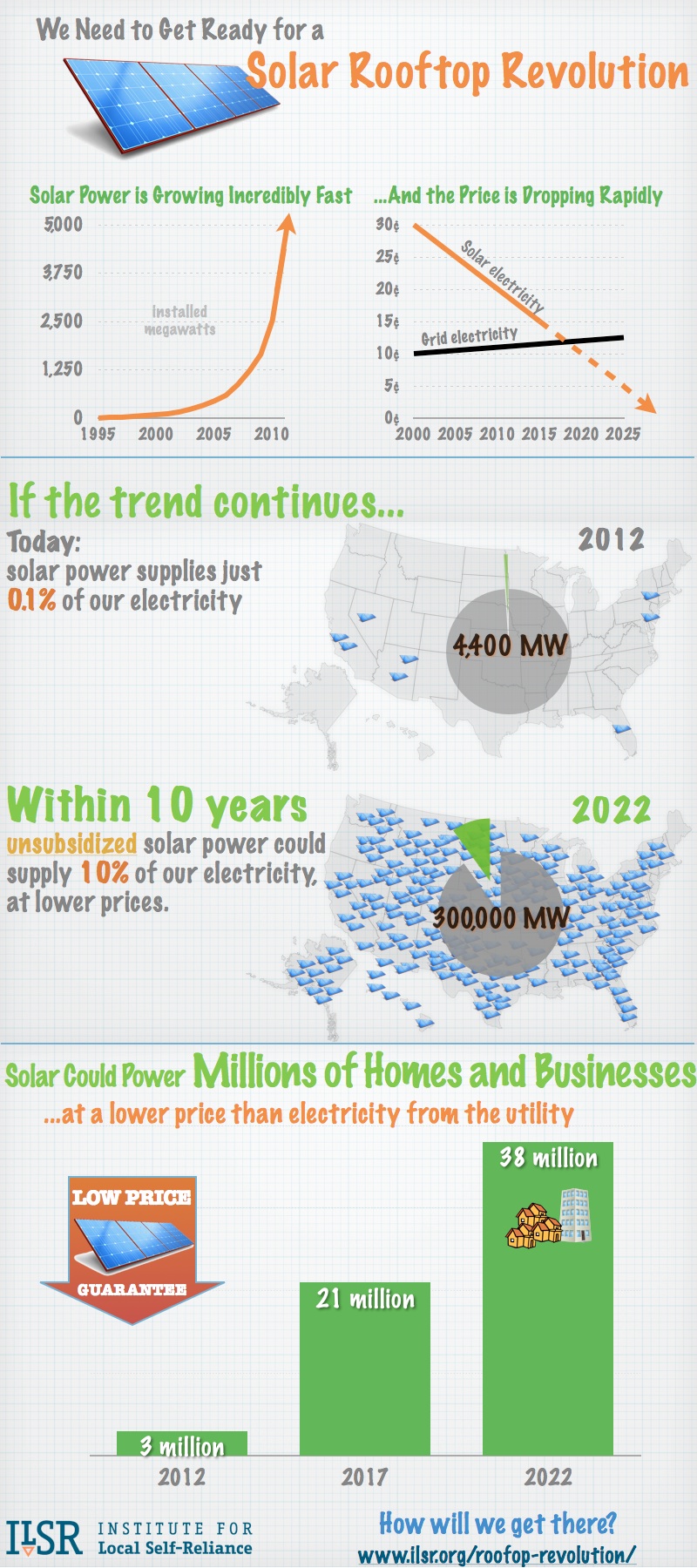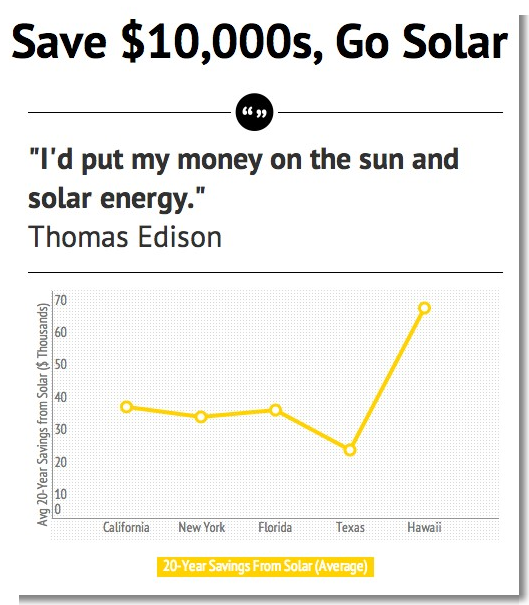Solar Grid Parity Infographic, + An Important Addendum

Sign up for daily news updates from CleanTechnica on email. Or follow us on Google News!
Originally published on Cost of Solar.
The Institute for Local Self-Reliance (ILSR) has published some wonderful reports on the solar rooftop revolution. It has also published numerous articles, charts, and graphics on this. Below is its Solar Rooftop Revolution infographic focused on when we’ll see solar panels cost less than grid electricity across the US (without subsidies). It’s a great infographic based on a great report… but it has one notable messaging flaw that I will discuss in depth in the text below it. (Hint: it has something to do with the italicized words above, and it’s a very important matter for homeowners.)
The Item This Solar Grid Parity Infographic Leaves Out
Solar grid parity and the solar panel cost projections in the infographic above are based on a lot of assumptions (e.g. how long the solar panels will be working and in use, the projected drop in the cost of solar, the projected rise in electricity prices, etc.). ILSR would be happy to tell you this, and does right up front in its Rooftop Revolution report [PDF]. One of the key assumptions (and points) in the analysis above, however, is that these solar cost and solar grid parity projections are for unsubsidized solar.
It’s mentioned in the infographic there, but you could have easily missed it, and what that actually means is not explained at all. Basically, the ILSR study is a look at the big picture and a look at what is likely to happen as solar tax incentives or subsidies are removed. However, nationwide, that isn’t scheduled to happen until 2016… and there are also many local and state solar subsidies across the country. In other words, while solar power is projected to hit “grid parity” on average nationwide by about 2017, with subsidies available today, most of you reading this are probably already at grid parity, and certainly at “economic parity” — the point where it makes more financial sense to go solar than to keep paying the electric company for your electricity. Solar panels cost less already (if you take these important incentives into account) than buying electricity from the grid. Seriously. Look into it.
Solar Panels Cost At Least 30% Less Than On The Price Tag
The federal solar panel subsidies in place right now (which are scheduled to end in a few short years) are quite considerable. In that Rooftop Revolution report, John Farrell writes: “The cost of these incentives is not insignificant. For example, the federal tax credit allows solar projects to get back 30% of the installed cost. Claimed by nearly all solar projects, in 2010 the tax credit amounted to nearly $1.6 billion (for 878 megawatts of solar at an average price of $6.20 per Watt).”
Yep, 30% of the cost of a solar power system can be regained from the federal government. You’ve got a 30% discount dangling before your eyes. This is one key reason solar power saves the average American who decides to go solar today over $20,000 over 20 years. (Also, given the advantages of solar, it’s a good federal investment.) There are also tons of state and local incentives that help to make going solar even cheaper.
Solar Panels Cost Less For Solar Leasing Companies
Importantly, the 30% tax credit isn’t the only federal incentive, but it’s the only one that is really of use to residential solar customers… well, it was, until solar leasing came along. There is also a depreciation incentive that large, 3rd-party solar companies can take advantage of that let them lease solar panel systems to you for a deal competitive in many cases with buying your own solar power system (though, this is a hotly debated topic, and it again depends on the assumptions you use regarding solar power system lifetime, electricity price increases, etc). To simplify, 3rd-party solar companies like Sunrun and SolarCity can take advantage of this extra incentive and use it to cover their inherent need for profit while still offering you a good deal on solar (often at close to $0 down).
In John Farrell’s words: “Solar leasing allows residential property owners to have solar installed with no or low upfront cost, and typically means they will see an immediate reduction in their electricity bill, even when factoring in the lease payments to the third party. The third party is able to capture the federal tax incentives (including depreciation, otherwise not available to residential users) and therefore can compete favorably with those making cash purchases of solar power for their homes.”
Solar Panels Cost Less…
The take-home point: while the cost of solar is dropping, solar incentives available today make now an excellent time to go solar. Solar panels cost less than grid electricity for many or possibly even most of us. In other words, get a solar quote today!
Chip in a few dollars a month to help support independent cleantech coverage that helps to accelerate the cleantech revolution!
Have a tip for CleanTechnica? Want to advertise? Want to suggest a guest for our CleanTech Talk podcast? Contact us here.
Sign up for our daily newsletter for 15 new cleantech stories a day. Or sign up for our weekly one if daily is too frequent.
CleanTechnica uses affiliate links. See our policy here.
CleanTechnica's Comment Policy




